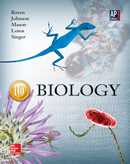1 A) ciliate. B) euglenoid. C) diatom. D) chlorophyte. E) sporozoan. 2 A) plasmodia. B) dinoflagellates. C) euglenoids. D) diatoms. E) foraminifera. 3 A) The grouping is paraphyletic because it excludes groups, such as plants, which are descendents from ancestors of green algae. B) Monophyletic clades have been found within the protists, preventing them from forming a coherent group. C) Some taxonomists argue for certain members of the group to be classified in new kingdoms. D) Protists, like plants, animals, and fungi, are eukaryotes, and so should be incorporated into those kingdoms. E) Protists are so diverse that it's pointless to try to organize them into related lines of descent 4 A) Prokaryote-like genes are found in the nucleus of eukaryotes which appear to have moved from the ancestral engulfed prokaryote into the eukaryote's genome. B) The structure of DNA in chloroplasts and mitochondria is circular and without centromeres and telomeres. C) Extra membranes around chloroplasts and mitochondria seem to have persisted from the original engulfing event. D) There is no scientific evidence of endosymbiosis. E) All of the above are evidence of endosymbiosis. 5 A) Various intermediary strategies may be viewed as "missing links" that help define the spectrum of events which culminated in the events we see in more advanced eukaryotes. B) Asymmetric divisions which lead to budding can be viewed as an ancestral version of mitosis. C) Schizogony represents the most primitive form of mitotic divisions, and can be seen in most mitotic divisions today. D) They represent a coherent system in which experimentation can be easily done. E) Because they're small, they divide rapidly and so it's easy to find cells in each stage of the process of division. 6 Giardia once had mitochondria but lost them secondarily?A) They use their cell membranes in a way similar to the way the inner membrane of mitochondria works. B) They are obligate anaerobes. C) They have in their genome genes which are very similar to those found in mitochondria. D) They contain two nuclei. E) They have remnant mitochondrial DNA loosely associated within the cytoplasm. 7 A) The tsetse fly's gut removes the surface of the trypanosome so that antibodies cannot bind it. B) Trypanosomes are too small for a vaccine to work on them. C) Trypanosomes have thousands of variable antigen genes from which to select, making it hard to develop an antibody which will consistently bind to them. D) There are no proteins in trypanosomes, and therefore they have no antigens. E) Vaccines can't work against protists. 8 Plasmodium is an apicomplexan which causes which serious disease, a leading killer worldwide?A) AIDS B) Malaria C) Dengue fever D) Chagas disease E) Red tide 9 A) Being covered with hair (cilia) all over their surface. B) Causing the growth of cilia upon infecting a host cell. C) Presence of a silica shell. D) Having a flagellum that has "furry" extensions on it. E) Presence of a special carbohydrate called chrysolaminarin. 10 A) By absorbing red light, the red algae are less likely to experience mutation, thereby allowing the green algae to diverge genetically. B) Similarities of genes are purely coincidental. C) Different host cells engulfed the same bacterial symbiont. D) Rhodophyta use prokaryote-style RNA polymerases, while the green algae are true eukaryotes. E) Horizontal gene transfer of RNA polymerase probably happened in the history of Rhodophyta, replacing its RNA polymerase. 11 A) Sponges B) Land plants C) Chlorophyta D) Stramenopila E) Euglenozoa 12 A) Seeking out mates B) Feeding C) Encysting D) Production of spores E) This phase is taken on in preparation to make a "slug". 13 A) Changes in the DNA composition allowed phospholipids to accumulate around the chromatin, forming a barrier. B) The rough ER and smooth ER formed to increase the membrane surface area, eventually surrounding the nucleus. C) The nuclear envelope occurred as a result of the cell's improvements in metabolic efficiency, leaving additional energy available for the production of intracellular compartments. D) Infoldings of the cell membrane gradually increased to allow the cell to achieve larger volumes. Eventually partitioning of the nucleus provided additional control over gene expression. E) Natural selection favors complexity, and thus the nuclear envelope gradually was established. 14 A) It attracts mates. B) It is photosynthetic. C) It stores DNA for sexual reproduction. D) It is their mitochondrion. E) The kinetoplastid acts as a spore which can survive adverse conditions. 15 A) They make the cells buoyant. B) They discourage predators. C) They're probably used for membrane transport activities. D) Because of these vesicles, they can protect themselves from the immune system of their host cells. E) They help make the cells "sparkle" at night in warm ocean water.





